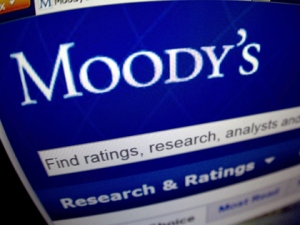An international agency has raised the credit rating of the Philippines from two notches to just one notch below investment grade, a positive development for the country amid global economic woes.
With a new rating from Moody’s Investors Service, the Philippines expects to make the last step toward investment grade soon.
An investment rating is expected to allow the country to attract more job-generating foreign direct investments.
As a result of Moody’s decision, the country’s credit ratings from all three major international credit watchdogs are now all at one notch below investment grade.
Fitch Ratings and Standard & Poor’s earlier raised their own ratings for the Philippines to just a notch below investment grade, citing encouraging economic developments.
In a decision announced yesterday, Moody’s said the improved assessment of the creditworthiness of the Philippines was based on its healthy pace of growth, improving fiscal performance of the national government, stable banking sector and projected ability to keep a robust pace of economic expansion over the medium term.
“Despite the head winds from softening external demand, the Philippines has demonstrated considerable economic strength and fiscal resilience,” Moody’s said in a statement.
Good governance
Finance Secretary Cesar Purisima said the upgrade in the credit rating by Moody’s was proof that “good governance is good economics.”
Purisima noted that Moody’s decision was the ninth positive action that the Philippines got from various credit rating agencies since President Aquino took office in 2010.
“This is another affirmation of the economic agenda of President Aquino. Good governance is indeed good economics. This is the ninth positive ratings action since [the President] took office and has brought us on the cusp of investment grade rating,” Purisima said.
Tetangco delighted
Gov. Amando Tetangco Jr. of the Bangko Sentral ng Pilipinas said Moody’s favorable decision would fuel hopes that an investment rating may come “sooner rather than later.”
“We are delighted with Moody’s recognition of the Philippines’ strengthened macroeconomic fundamentals and growth prospects,” Tetangco told reporters.
He said the country’s banking system became strong with the implementation of various regulatory reforms over the years.
“Investment grade is certainly within sight,” said Eugene Leow, an economist at DBS Bank in Singapore.
“This does not come as a surprise given the structural improvement in GDP (gross domestic product) growth and debt management dynamics over the last few years,” he added.
He said a broadening of the revenue base, such as reforms on taxes on alcohol and cigarettes, would probably be needed before the major rating agencies upgraded Philippine debt again.
Stable outlook
Moody’s said the latest credit rating of the Philippines, which applies to debts denominated in local and foreign currencies, was assigned a “stable” outlook.
Such an outlook indicates that a credit rating is likely to remain the same within the short term unless unexpected developments dampen existing favorable economic trends.
In the first half of the year, the Philippine economy grew by 6.1 percent from a year ago, one of the fastest growth rates in the region.
The encouraging growth rate of the Philippines came even as the euro zone suffers a recession and as the United States faces slow growth and high unemployment levels.
“In addition, cyclical features support improved prospects for growth in the medium term,” Moody’s said.
Infrastructure, remittance
The agency said the factors supporting prospects of a healthy pace of growth in the next few years included rising government spending on infrastructure and the still strong remittances from overseas Filipino workers.
Because of remittances, consumption by Filipino households is expected to remain robust.
The fact that banks in the country are profitable and strong indicate that they are capable of providing credit support to businesses and to the government, according to Moody’s.
$82-B forex reserve
Rising foreign exchange reserves, now at a historic high of about $82 billion, was also cited for the country’s improved credit rating.
With the reserves, higher than the combined foreign debts of private firms and government entities, the Philippines can pay debts to foreign creditors as they come due.
The reserves are boosted mainly by remittances, foreign portfolio investments and inflows in the country’s business process outsourcing sector.
Peso, interest rates
“Taken together, these strengths have contributed to the appreciation of the peso and lower interest rate costs for the government. These have in turn helped accelerate the process of debt consolidation, thus addressing the relatively high stock of debt, a constraint on the Philippine rating,” Moody’s said.
The national government’s debt stock—the proportion of its outstanding debts to the country’s gross domestic product—has fallen over the years to just about 50 percent from a high of over 70 percent in the middle of the last decade.
The rise of the peso and the decline in interest rates, both of which are credited for improved investor sentiment, helped cause the decline in the government’s debt stock over the years, according to finance officials.
Efforts to improve revenue collection and measures to discourage tax evasion were also helpful in improving government’s fiscal condition, the officials added.
Peace deal
Moody’s also said that the latest peace agreement between the government and Moro rebels would further boost the country’s economy.
“Over the longer term, the landmark peace agreement signed between the government and the Moro Islamic Liberation Front may have wider beneficial effects on investment and economic growth in Mindanao… which has untapped agricultural and mining potential,” Moody’s said.
The upgrade in credit rating came following the 10-notch jump in ranking—from 76th to 66th out of 144 countries—by the Philippines in the global competitiveness report that the World Economic Forum released last month.
Originally posted: 1:24 pm | Monday, October 29th, 2012


